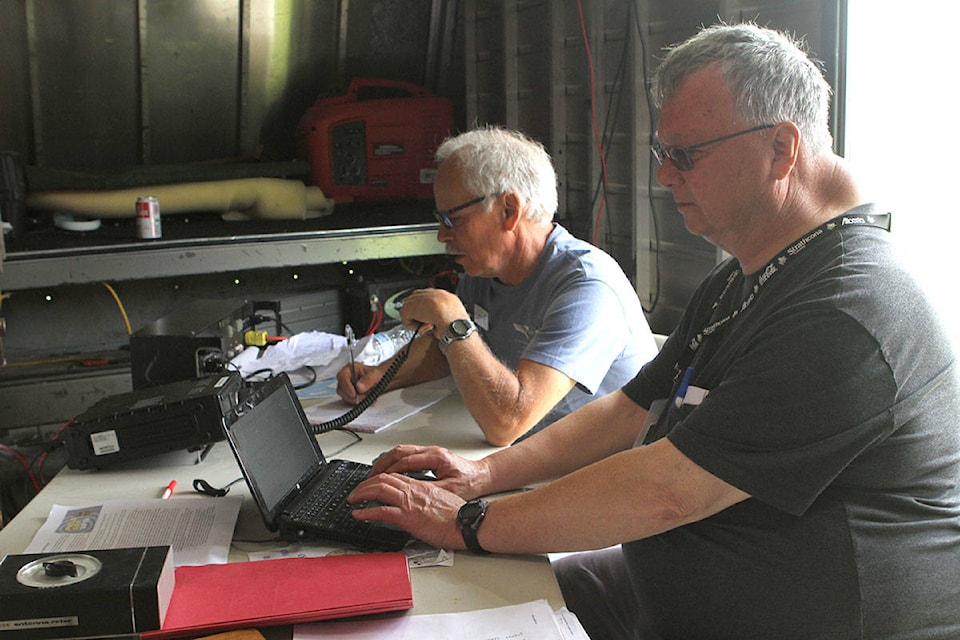Central Alberta Amateur Radio Club members prepared for emergencies while having some fun last weekend.
The goal of the North American Amateur Radio Field Day exercise is emergency preparedness, learning technical skills and connecting with like-minded people, said John Allen, organizer of the event and a club member.
More than 30 people came together to focus on skills, science and service, and made about 250 connections over the weekend throughout North America, including Edmonton, California, Texas and Washington, D.C.
Four towers, including seven antennas, went up west of Penhold for the exercise.
Those who came out were disconnected from any power grids and worked off generators.
“We’re not using commercial power, because it’s a practice to prepare us for in case there’s no power,” said Allen.
“The idea is to try and make contact with each other and have a bit of a demonstration.”
The skill comes in handy when there’s an emergency – when there may be a power outage and when phones are down.
“Amateur radio is set up for people when they’re displaced and to make contact with a central emergency agency,” explained Allen, adding they’re also used in case of emergencies such as wildfires.
Hams are well known for their ability to provide emergency communications in a very short time during natural disasters.
The Okanagan Mountain fire, in the summer of 2003, drew participation from the surrounding amateur radio clubs, who provided communications support. This was also the case in the 2009 fires in West Kelowna and surrounding areas.
Local ham operators were instrumental in providing support during the Pine Lake tornado, noted Allen.
“In some cases, communications between various response agencies is not the best, so we put amateurs in each place to make sure everybody knows what’s going on,” said Allen.
The Central Alberta Amateur Radio Club has about 50 members.
For many in the club, the lure of connecting with people around the world is part of the reason for taking up the hobby.
For others, the appeal is helping out in emergencies and disasters. In some situations, ham radio may be the only way to communicate.
Operators must have a licence to be on the air. For more information, visit www.caarc.ca.
mamta.lulla@reddeeradvocate.com
Like us on Facebook and follow us on Twitter
